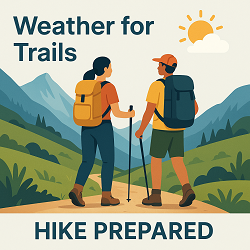Tucson, AZ Weather Forecast and Current Conditions (85701)

Feels Like 91°F
Current Weather

Feels Like 91°F
Forecast at a Glance







This Date in Weather History
1987 - Thunderstorms produced severe weather in the central U.S. Thunderstorms in West Texas spawned four tornadoes in the vicinity of Lubbock, and produced baseball size hail and wind gusts to 81 mph at Ropesville. Thunderstorms produced hail two inches in diameter at Downs KS and Harvard NE, breaking car windows at Harvard.
More on this and other weather history
Tucson 7 Day Weather Forecast Details
Monday Sep 8

Night: Mostly clear, with a low around 77. South wind around 3 mph.
Tuesday Sep 9

Day: Sunny, with a high near 103. Heat index values as high as 100. South southwest wind 2 to 7 mph.

Night: Mostly clear, with a low around 77. South southwest wind around 6 mph.
Wednesday Sep 10

Day: Sunny, with a high near 102. Heat index values as high as 100. South wind 6 to 14 mph.

Night: Mostly clear, with a low around 75. South wind 6 to 13 mph.
Thursday Sep 11

Day: Sunny, with a high near 100.

Night: Mostly clear, with a low around 73.
Friday Sep 12

Day: Sunny, with a high near 97.

Night: Clear, with a low around 70.
Saturday Sep 13

Day: Sunny, with a high near 98.

Night: Clear, with a low around 70.
Sunday Sep 14

Day: Sunny, with a high near 100.

Night: Clear, with a low around 72.
Monday Sep 15

Day: Sunny, with a high near 100.
Sun & Moon Monthly
Sunrise 7:04 AM
Sunset 7:40 PM
Last Light 8:05 PM
Moonset 7:53 AM

Contiguous United States Extremes
Mon's High Temperature
110 at Death Valley, CA
Mon's Low Temperature
27 at 7 Miles South Southeast Of Moddersville, MI and 5 Miles East Of Davis, WV and 14 Miles West Southwest Of Mackay, ID
Weather Folklore
When cumulus clouds become heaped in leeward during a strong wind at sunset, thunder may be expected during the night.
Current subscribers - login to your ClearSky account
About Tucson, Arizona
Tucson (; O'odham: Cuk Ṣon; Spanish: Tucsón) is a city in Pima County, Arizona, United States, and its county seat. It is the second-most populous city in Arizona with a population of 542,630 at the 2020 census, while the Tucson metropolitan statistical area has an estimated 1.08 million residents and is the 52nd-largest metropolitan area in the U.S. Tucson and Phoenix anchor the Arizona Sun Corridor. The city is 108 miles (174 km) southeast of Phoenix and 60 mi (100 km) north of the United States–Mexico border. It is home to the University of Arizona.
Major incorporated suburbs of Tucson include Oro Valley and Marana northwest of the city, Sahuarita south of the city, and South Tucson in an enclave south of downtown. Communities in the vicinity of Tucson (some within or overlapping the city limits) include Casas Adobes, Catalina Foothills, Flowing Wells, Midvale Park, Tanque Verde, Tortolita, and Vail. Towns outside the Tucson metropolitan area include Three Points, Benson to the southeast, Catalina and Oracle to the north, and Green Valley to the south.
Tucson was founded as a military fort by the Spanish when Hugo O'Conor authorized the construction of Presidio San Agustín del Tucsón in 1775. It was included in the state of Sonora after Mexico gained independence from the Spanish Empire in 1821. The United States acquired a 29,670 square miles (76,840 km2) region of present-day southern Arizona and southwestern New Mexico from Mexico under the Gadsden Purchase in 1853. Tucson served as the capital of the Arizona Territory from 1867 to 1877. Tucson was Arizona's largest city by population during the territorial period and early statehood, until it was surpassed by Phoenix by 1920. Nevertheless, its population growth remained strong during the late 20th century. Tucson was the first American city to be designated a "City of Gastronomy" by UNESCO in 2015.
The Spanish name of the city, Tucsón (Spanish pronunciation: [tuɣˈson]), is derived from the O'odham Cuk Ṣon (O'odham pronunciation: [tʃʊk ʂɔːn]). Cuk is a stative verb meaning "(be) black, (be) dark". Ṣon is (in this usage) a noun referring to the base or foundation of something. The name is commonly translated into English as "the base [of the hill] is black", a reference to a basalt-covered hill now known as Sentinel Peak. Tucson is sometimes referred to as the Old Pueblo and Optics Valley, the latter referring to its optical science and telescopes known worldwide.
Content from Wikipedia, licensed under CC BY-SA 3.0.

